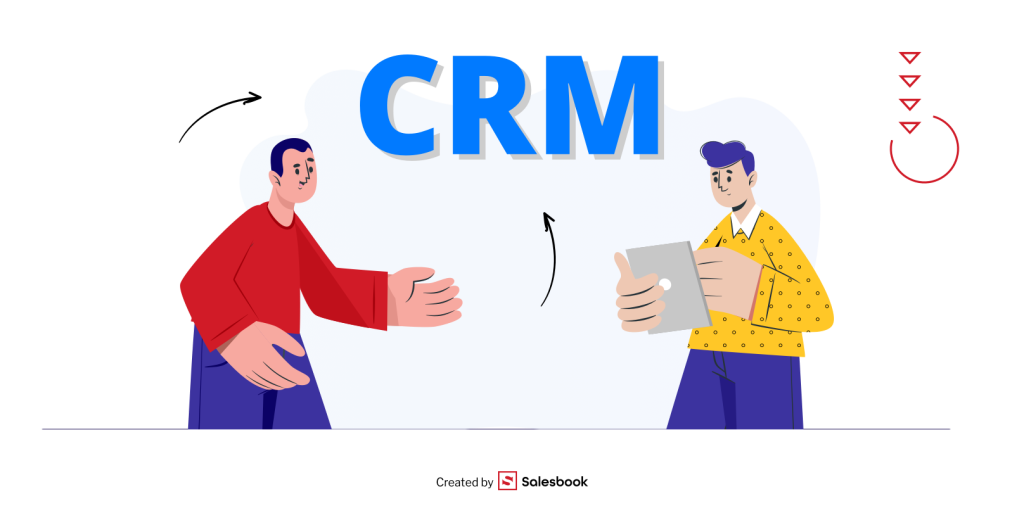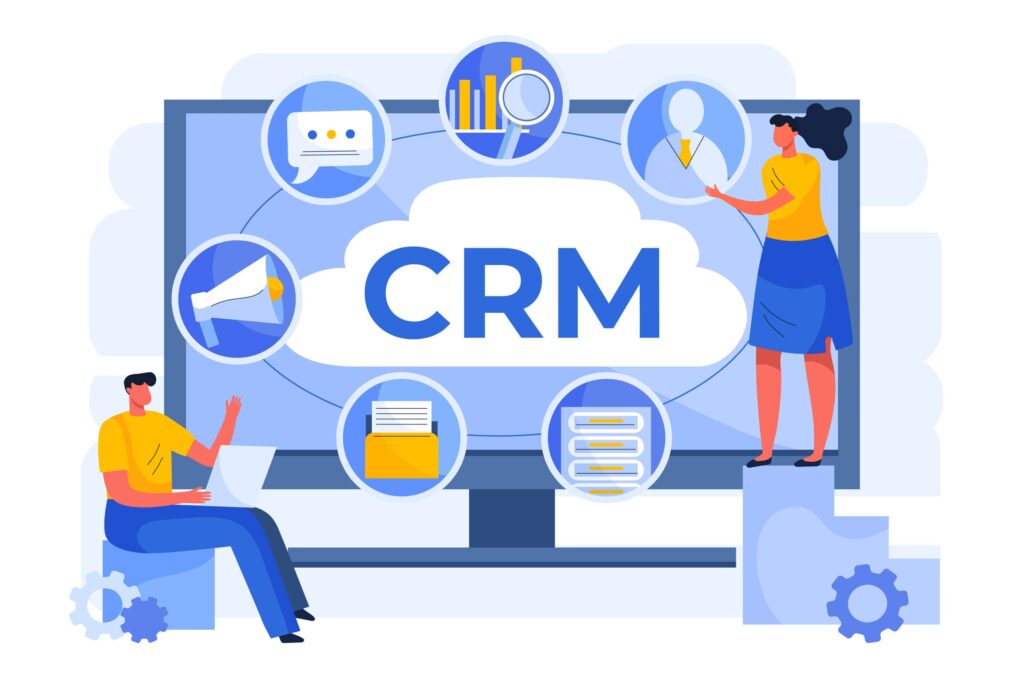How to involve customer in a sales process?

Closing a sale is one of the most difficult stages of the entire sales process. It is the moment when the customer decides, agrees to the transaction and shows trust in the company or product. It turns out that in some situations this stage is not difficult at all and there are vendors who handle it extremely well. All because they managed to involve the customer emotionally in the sales process. In this article I will show you how to do this with the help of Sales Acceleration tools.
How do we define an involved customer?
It can be said that sales are easy when we have a customer “on our side”, i.e. one who knows the product category, our brand and has coded in his head its positive image. If we add to this a conscious need and understanding of the benefits of cooperation, the signing of a contract is all that remains.
In a situation defined in this way, we talk about commitment, i.e. a substantive and emotional relationship between the client and our brand or product. This engagement makes us sell more, more often and at a higher price, and customers become natural carriers of our business values. In other words, they start recommending us.
A report prepared by Rosetta, a consulting firm that has surveyed nearly 5,000 respondents in the US, indicates that a committed customer:
- buys 90% more often,
- spend about 60% more money in one transaction,
- 5x more often indicates a brand as the only one it uses in each range,
- 4x more often accepts advertising offers (e-mail, traditional mail),
- 5x more often is willing to test a new product from the offer,
- 7x more often he can accept product or image failures of the company.
Sounds like a dream, right? So, let’s see what the main drivers of real commitment are.
How to build involvement in the sales process?
Customer involvement is the result of a process and has many dimensions, as is our relationship with other people. What counts here is who the customer is, what experience they have and how their emotional profile is built up, but most importantly, what elements are the basis of our story.
When building engagement, it is important to use as many elements as possible because we never really know which one will work in relation to a person. For we don’t know their precise fate, nor do we know which layers of memory and related emotions will be triggered at a specific moment.
Below you will find a set of practices that you can incorporate into your sales story, which will make it possible for you to establish a true relationship with your customer based on positive emotions.
- Personal relationship with the brand.
Everything you do with your client should have a personal dimension. As if there is only that customer in the world, and the whole company was founded just to meet their needs. The customer should feel on an emotional level that he has been noticed as a person and is not treated as one of many.
The customer has a name, prefers one colour over another, has taste preferences, etc. Remember when a Starbucks barista asked you for the name he later wrote on the mug? Yes, it was building a personal dimension to the relationship with the brand. You can use a lot of ideas to do that, such as personalizing the functional and quantitative offerings, adjusting the price, producing limited series of products or adjusting the form of the product to the customer’s aesthetic preferences.
There are many ideas – all aimed at making the customer feel that the company has done something for him and only for him. Allowing yourself to have a personal relationship with the customer is like a favor we do him. We build reciprocity in this way – and this will pay off in the future in the form of someone recommending us by someone who is simply satisfied.
2. The values that build the brand.
You have certainly noticed that companies use the functional features of a product less and less frequently in their marketing message, and more and more often choose abstract concepts that describe values. A great example is the loud Nike campaign, in which a controversial football player was used.

Instead of talking about the chemical composition of the rubber in its latest running shoes, for example, Nike has decided to manifest values that are close to its heart. In this way, it sent a clear message to its target group – people and their beliefs are important to us, even more important than our latest running shoes.
Whether we like it or not, whether we think Nike’s motives are true or whether we see a clear hypocrisy here – this message works. People are willing to buy more often and at a higher price than those companies that demonstrate that it is not profit that is most important to them.
3. Our story.
There is no better time to manifest our values than by telling the story of how a business or product was created. For behind every business there is an idea that was born in the head of a particular person.
And yes, it is extremely important that the customer know:
- why the company was created,
- under what circumstances,
- who started it,
- what problem he wanted to solve (what was the world like before the company was founded),
- what obstacles the founder(s) encountered in the beginning,
- how they’ve overcome them,
- what the company is today.
During the presentation of the company’s history, the client has a chance to see himself as such a founder, and when he understands how difficult the beginnings were, or what sacrifices were involved, it will be easier for him to appreciate the company in its current form. Prudential is a great example – its representatives really did good job telling about the company’s history.
4. Humanization and making the image more realistic.
One of the most difficult barriers that a good salesman must overcome is the customer’s conviction that he or she is a human being (an individual), while the company is a cold and institutionalized organization that only wants profit. In this way, the customer perceives the sales relationship as asymmetrical and unfair. Our mission in this situation is to give the company a “human face”.
There are usually two methods. The first is to show that de facto there are people behind the company, i.e. its employees. Here we can even point out specific people and present their photos in an employee environment or during the realization of their passions. A good solution is also to show workplaces in general, i.e. office spaces, production halls and company buildings that are filled with people. Suddenly it turns out that the company represented by particular people is not so far from the client himself.
The second method refers to identifying customers who have already used our offer and presenting them to the prospective customer. Here the principle of imitation works, i.e. a greater tendency to take risks if someone before us (preferably someone like us) has already taken such risks and succeeded. Remember to try to show similar people to each other, for example a doctor to a doctor, and the marketing director to the marketing director, take care of the similarity of gender, age and social status – otherwise the client may very easily reject the offer by expression: “it’s not for me.”
A great example of brand humanization is the BMW Motorrad website, which collects stories of users of this Bavarian motorcycle factory.

5. Asking questions and responding to needs.
This may seem trivial, but one of the key tools to engage the customer in the sales process is conversation. It is during the conversation that we have a chance to ask the customer questions, and consequently – to allow them to express their needs, define problems or ideas for improvement. The customer’s voice makes us not only receive a substantive contribution to what product and in what form we can offer it, but above all we give the customer a chance to manifest their emotions connected with our offer.
It is very important that the information from the customer is not only spoken or sent but is also noticed. For this purpose, we use several techniques, e.g. we make a note at the customer (so that he would see that we are doing it), enter his comments into the IT system or send him a confirmation of receipt of the questionnaire.
Moreover, the result of the conversation should be somehow interpreted and implemented by us in what the company does. Then the client will feel that we really listen to him.
Sales Acceleration in the process of building commitment
There are a handful of outstanding salespeople who can engage the customer in any situation. The others simply lack tools.
Meanwhile, it turns out that Sales Acceleration applications have built-in mechanisms to build a real and exciting relationship with a potential customer. What is more, they can force the vendors to implement the engagement strategy, even if the vendor is not convinced of it.
Let’s see how to apply the methods described above using the Salesbook application.
- Start with a name. When you start your conversation with a potential customer, you can ask for their name and enter it into the system. You can also ask for an email address or other information that you need to know to continue the process. This data may appear later during the presentation of an offer, which will give the impression that it has already been strongly personalized for a person.
- Show who the company is. Salesbook allows you to present information about your company in many ways. We can add a textual description of your company’s history or include a graphical representation of major milestones. We can show photos of the company’s founders, key employees or customers. We can display an infographic showing the company in numbers, or a video of the office visit. Nothing stands in the way of explaining what the company believes in, how it builds relationships with its environment or how it supports charitable activities.
- Show who you are. The Salesbook will also help you show yourself as a salesman/adviser. You can show your experience, achievements, professional history or passions. This approach will shorten the distance in the relationship with the client and he will not see you as someone he does not know at all and therefore should trust you to a limited extent.
- A product that fits. One of the most important elements creating engagement is to convince the client that the offer he is dealing with is tailored to his real needs. That it will meet their expectations and that they will not pay for something that they may never use. For this purpose, the Salesbook uses surveys, configurators and calculators. Thanks to them, the salesman can interactively select individual elements of the offer and immediately enter them into the system in order to calculate, for example, the final price, the amount of the contribution or the time needed to complete the project. An offer constructed in this way will always seem to be closely matched, i.e. close to the customer.
- Action. Salesbook in a way forces action on both sides of the sales process. Each meeting may end with a form planning further actions, such as making an appointment for a phone call. Moreover, after each meeting, the customer receives an e-mail with a detailed summary of the findings and the documents that we decided to send him, such as an offer or presentation.
To sum up, Sales Acceleration tools – by means of a process built into them, which realizes specific sales steps – allow to present the company’s value, very precisely match the offer to a specific customer and take into account his real needs. Even if we do not have salespeople on board who can engage the customer in the sales process using their natural abilities, we can design the whole scheme of the conversation in such a way as to be sure that certain parameters will appear in it.
PS. If you want to try a Sales Acceleration tool in your company, use the following form: test the demo. Salesbook is the first application of this type on the Polish market – it already effectively helps salesmen in companies such as Mercedes-Benz, BMW Motorrad or Prudential.
Table of Contents







